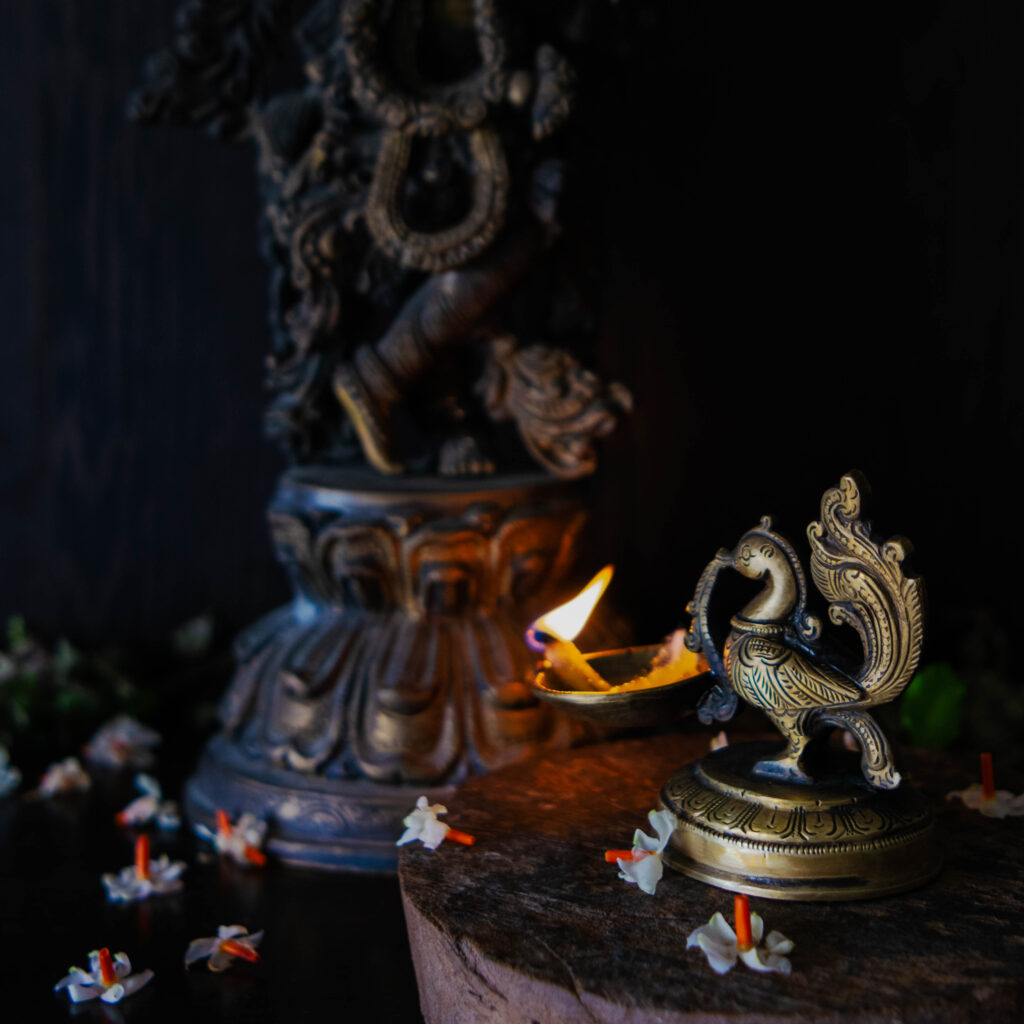Kerala, the verdant state nestled at the southern tip of India, is a land steeped in rich traditions and rituals that have been passed down through generations. Cocooned by the Western Ghats from the rest of India, the age-old customs of the state paint a vivid picture of this region’s unique and vibrant cultural tapestry.
Karkkidakam, the last month of the Malayalam calendar (mid-July to mid-August), marks the celestial transition from the Mithunam constellation to the Karkkidakam constellation. According to ancient texts, it marks the commencement of Dakshinayanam, the six-month-long night of the Gods. The month aligns with the peak of the southwest monsoon. For the agrarian society that relied entirely on nature , it was a challenging time with depleted granaries and waterborne diseases. The month gained names like “Kallakarkkidakam” (Rogue Karkkidakam) and “Panjamasam” (the month of miseries). Everyone eagerly anticipated the arrival of Chingam, the first month of the year, heralding sunny and prosperous spring days.
It is quite fascinating how the rituals and traditions evolve and change with seasons. With relentless rains and dark clouds surrounding the region, cleanliness and preventive medicine took center stage in Karkkidakam traditions and rituals. These rituals incorporate the rich flora and fauna of this tropical land, flourishing with the monsoon, to protect and rejuvenate the body and mind while passing on the wisdom of plants and herbs to the next generation. Though we are no longer solely reliant on nature’s whims, during the month, Malayalis go back to Karkkidakam traditions and rituals for the rejuvenation of the body and the mind. Quite interestingly, the number of people going back keeps increasing by year.
As the forces of nature rage on outside, confined to homes under the brooding skies, people devoted more time to prayers and spirituality, to brave the difficult times. One prominent tradition that emerged was observing the month as “Ramayana masam.” During the month, the epic Ramayana is recited daily, a practice that seems to have evolved from the 16th – 17th century after Thunchath Ezhuthachan composed the epic in simple and pure Malayalam as “Adhyathma Ramayanam Kilippattu.” The recitation starts on the first day of the month and continues in stages and culminates with Srirama Pattabhishekam on the final day, heralding the arrival of the golden days of spring.

The Karkkidakam traditions and rituals commence from the eve of the month. Every nook and cranny of the house, along with the courtyard, is thoroughly cleaned, and the waste is disposed of with the chorus, “Chetta Bhagavathi purathu, Sree Bhagavathi akathu,” inviting the goddess of abundance, Sree Bhagavathi, into the home. As is typical in Kerala’s traditions, Karkkidakam traditions and rituals also ensure that the glorious flora and fauna of this tropical land with medicinal properties find a prominent place in them. Ramayana parayanam starts with the offering of “dasapusham,” a collection of ten medicinal plants with natural curative properties, in front of a lighted lamp. Each plant is believed to represent a deity. Interestingly, dasapushpam also finds significance during the festival Thiruvathira, where women wear them in their hair for the ritualistic Kaikottikali/Thiruvaathira kali.
Here’s a poem with the names of dasapushpam.
“പൂവ്വാംകുറുന്തല് തിരുതാളി
ഉഴിഞ്ഞ വിഷ്ണുക്രാന്തി
നിലപ്പന മുയല്ച്ചെവി
ഭൃംഗരാജന്
മുക്കുറ്റി ദുറുവ ചെറുള
കയ്യോന്നികളിതെന്നിതെല്ലാം
പത്തുള്ള പുഷ്പമിവ
ചൊല്ലത് കേള്പ്പൂ ഞാനും”
To prepare for the recital, the house is cleaned again before dusk, and everyone takes a bath and wears freshly laundered clothes. Dasapushpam will be placed in front of the gleaming ghee lamp, along with a Kindi filled with water and the trio of tulsi, sandalwood paste, and bhasmam (vibhooti). The eldest member of the family recites the scripture, and the rest, especially children, listen to the tale of brotherhood, endurance, and dharma, imbibing the wisdom and tightening familial bonds.
Another Karkkidakam ritual related to Ramayana is “Nalambala Darsanam” (four temple pilgrimage), a journey to the temples of Srirama and his brothers. Starting from the temple of the eldest brother, Srirama, the pilgrimage continues to the temples of Bharatha, Lakshmana, and Sathrughna in a specific order and concludes back at Sriram temple before uchapooja (noon prayer). There are a few nalambalams in the state, but the main ones are located in Thrissur and Ernakulam districts, namely Thriprayar Sree Rama Temple, Koodalmanikyam Bharatha Temple, Moozhikkulam Lakshmana Temple, and Payyammal Shathrughna Temple. Legends say that the idols in these temples were worshipped by Sri Krishna during Dwapara Yugam. Devotees also visit the Hanuman temple at Chandanakkavu as part of this pilgrimage.
Karkkidakam traditions and rituals are diverse and fascinating, offering a unique insight into the cultural and spiritual heritage of Kerala. These customs not only provide a sense of unity among the people but also emphasize the importance of being in harmony with nature. In upcoming posts, I will explore the rest of the Karkkidakam traditions and rituals, such as Dasapushpam, Karkkidaka Kanji / Marunnu Kanji, Aanayoottu and Sughachikitsa for the elephants, Illam Nira and Niraputhari/Putharinaivedyam, rituals/routines with medicinal plants, Dinacharya, and Ritucharya, Karkkidakavavu, Pilleronam, Muppettuvelli, Pujas at home, Kuttitheyyam, and Ayurveda treatments.
Looking forward to sharing more about the fascinating world of Karkkidakam with you.
Love
Smitha
Links to the posts on Karkkidakam rituals and traditions.
- The first post : Karkkidakam traditions and rituals of Kerala https://smithasuraj.com/karkkidakam
- The second post : Ritucharya in Karkkidakam : Karkkidakam traditions and rituals of Kerala (Part II) https://smithasuraj.com/karkkidakam-2

Pingback: Ritucharya in Karkkidakam : Karkkidakam Traditions and Rituals of Kerala (Part II) – Smitha Suraj